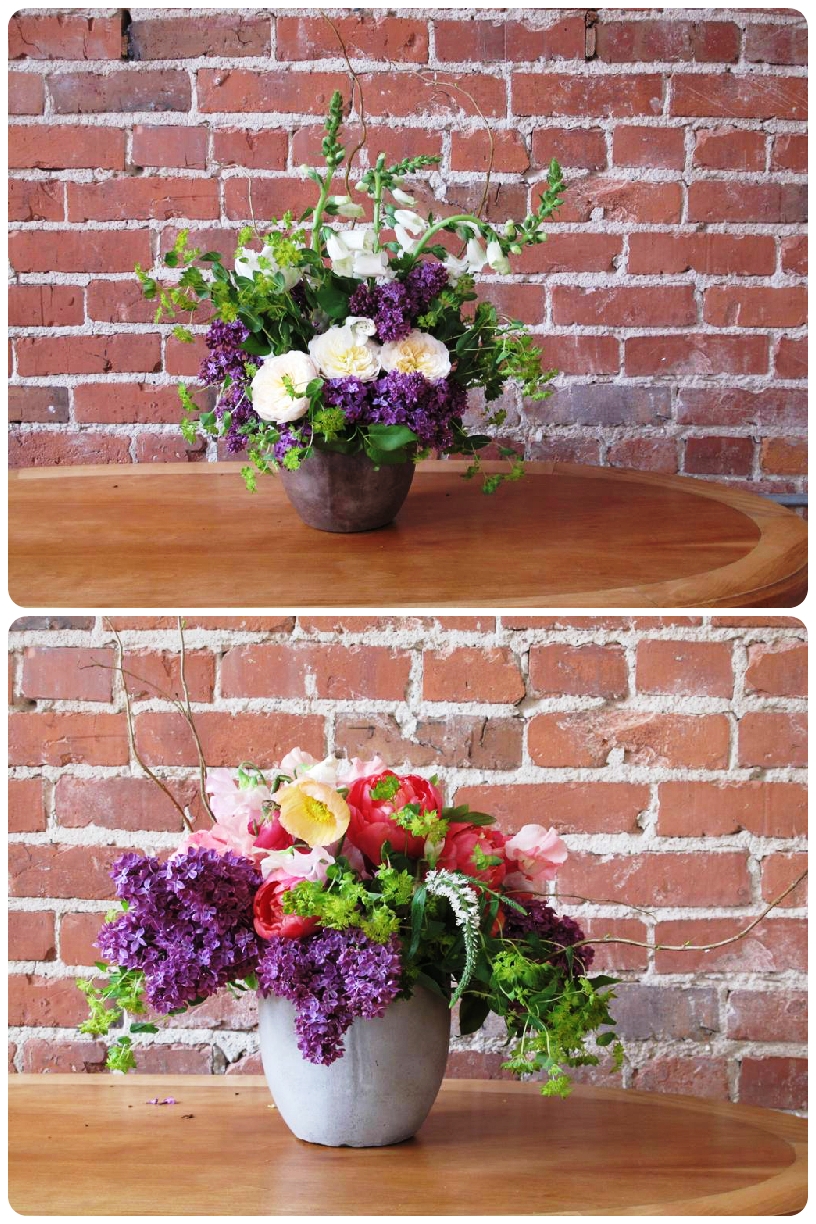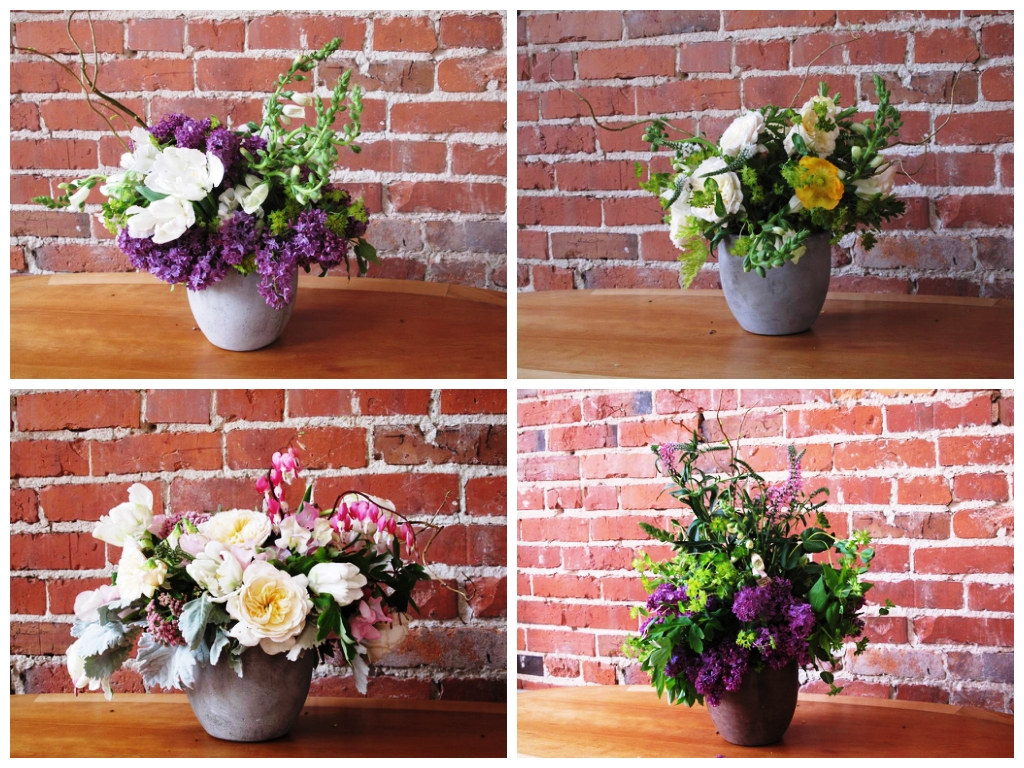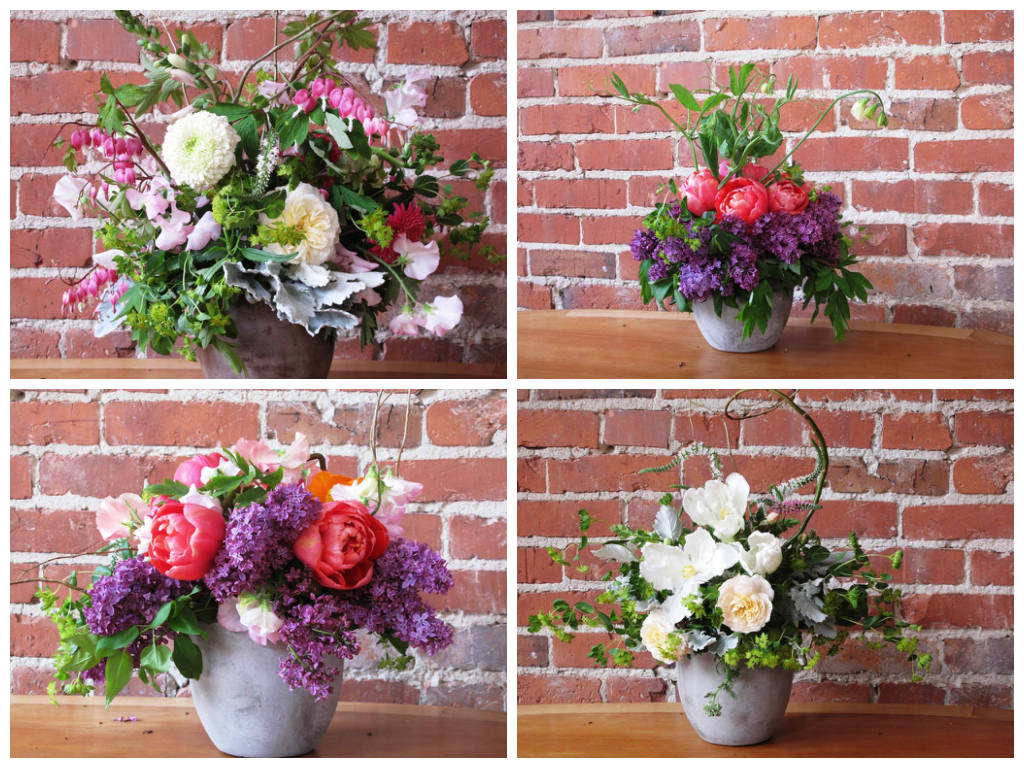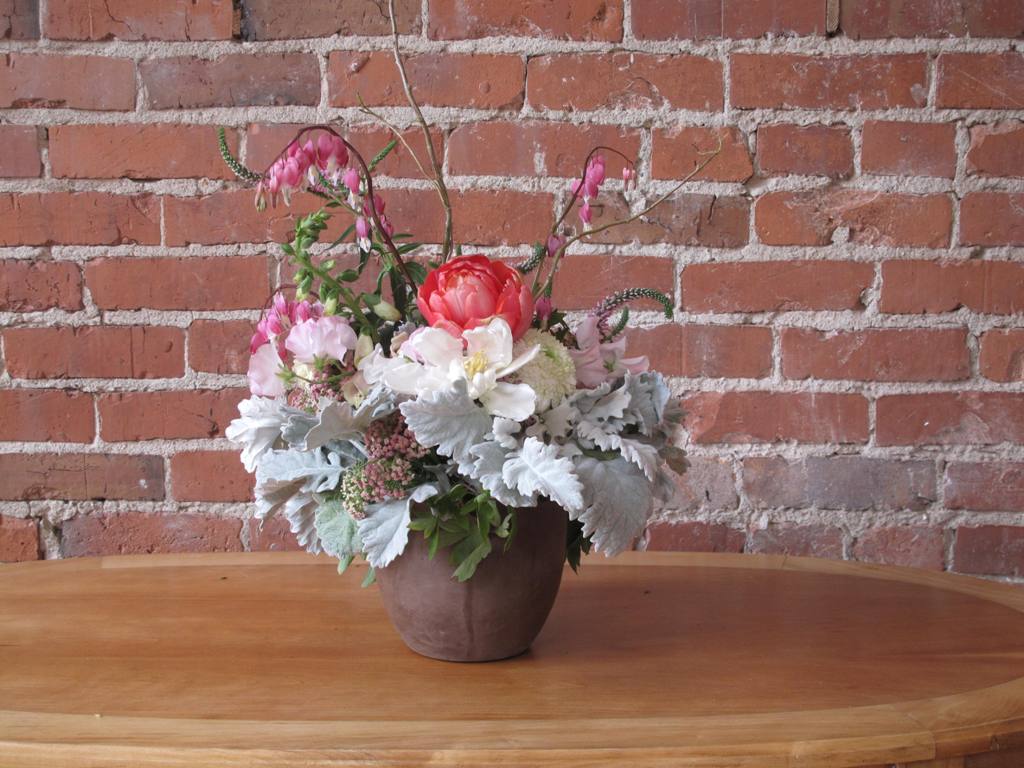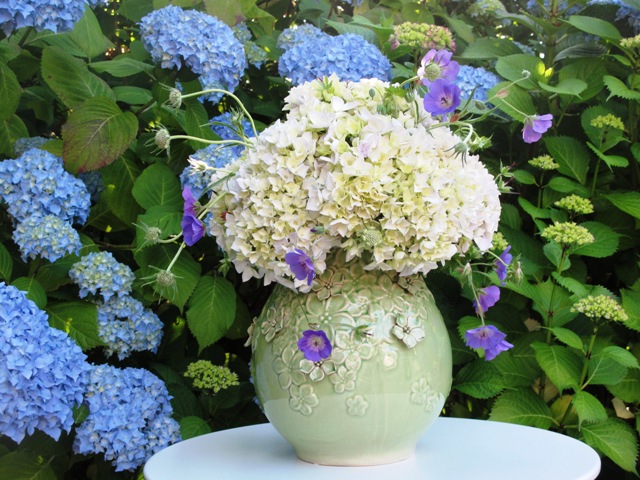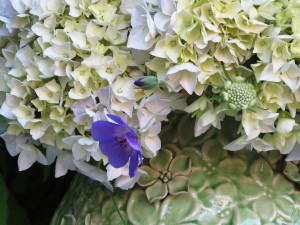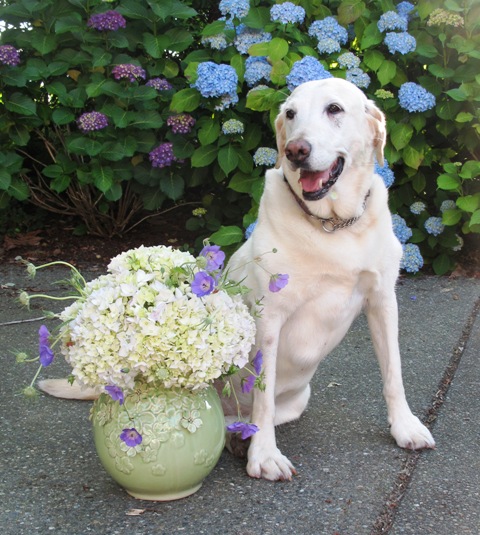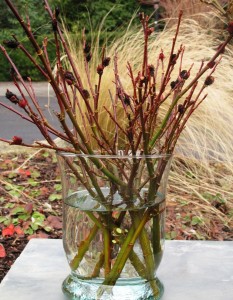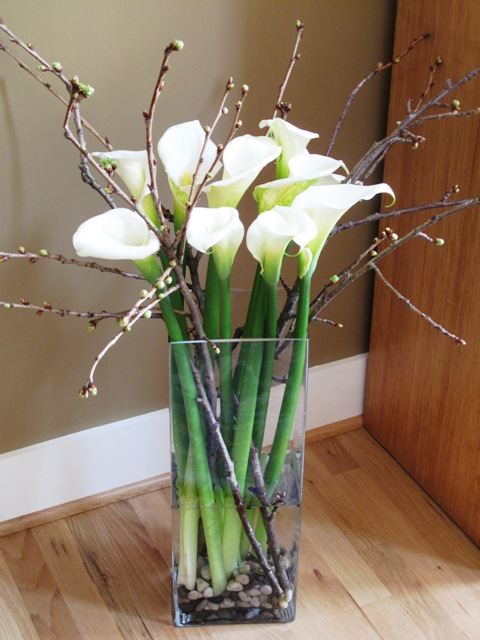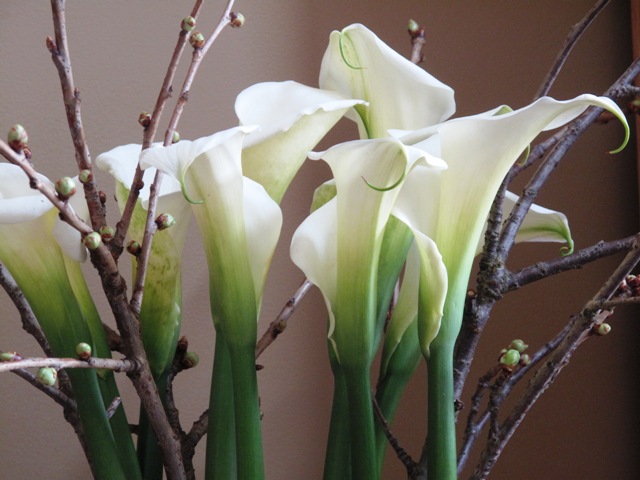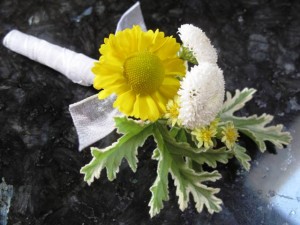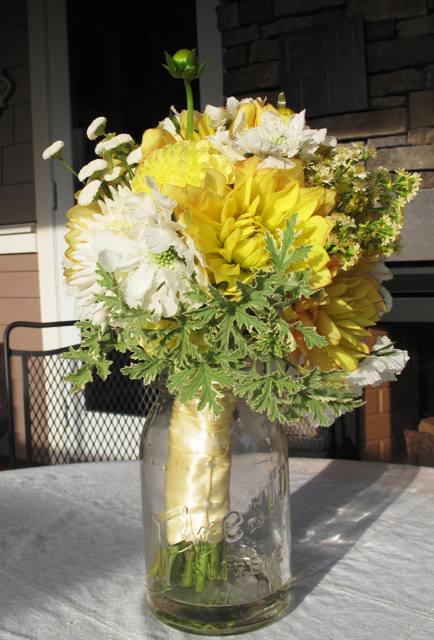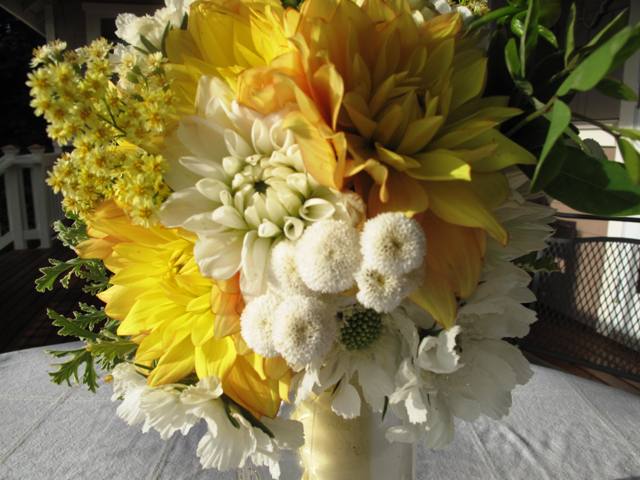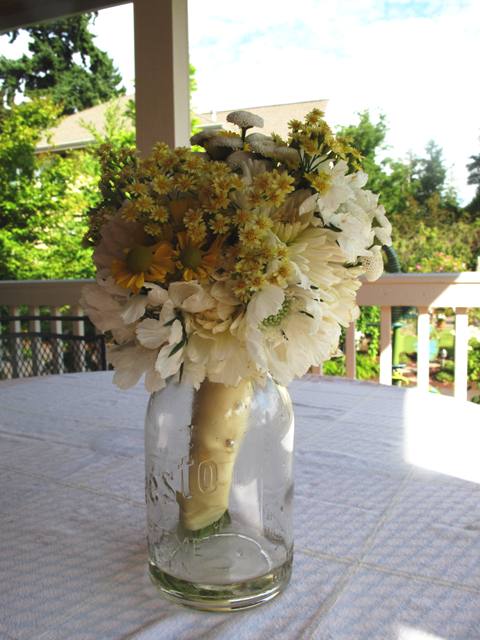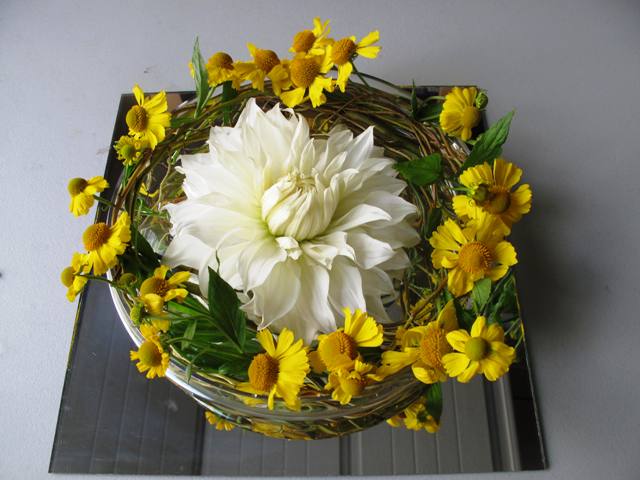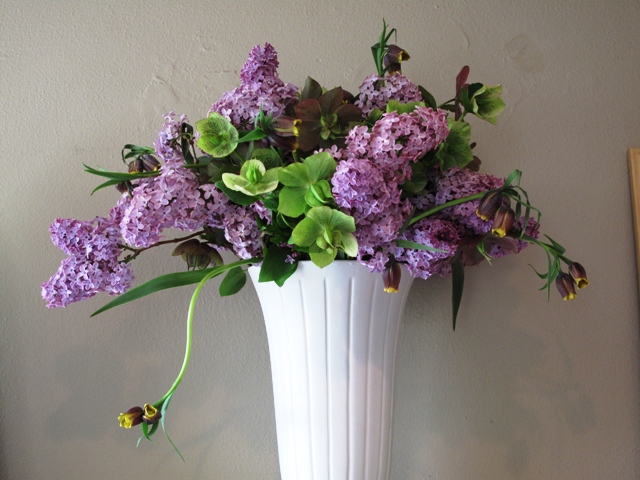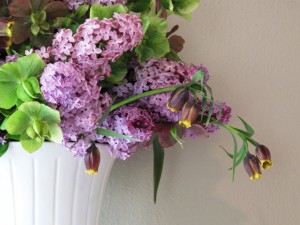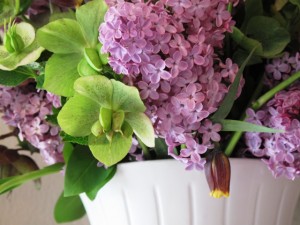Podcast: Play in new window | Download
Subscribe: Apple Podcasts | Podcast Index | | More

The Zweifel Family enjoys the nearby Oregon Coast, From left, daughter Nina, and Monika and Patrick Zweifel.
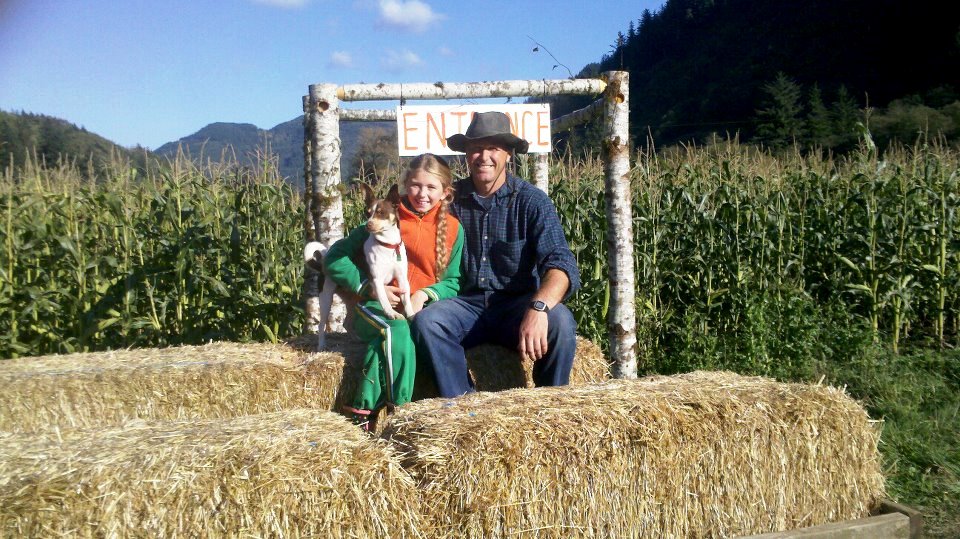
In the fall, there’s a pretty fun Pumpkin Patch and Corn Maze at Oregon Coastal. Here, Patrick poses with his daughter Nina.
Patrick Zweifel’s Oregon Coastal Flowers – his 64-acre, Tillamook, Oregon-based farm – has been well received by florists who shop at the Portland Flower Market, the Los Angeles Flower Market District and the Seattle Wholesale Growers Market where you can find permanent stalls filled with his gorgeous hydrangeas, calla lilies and Oregon forest products.
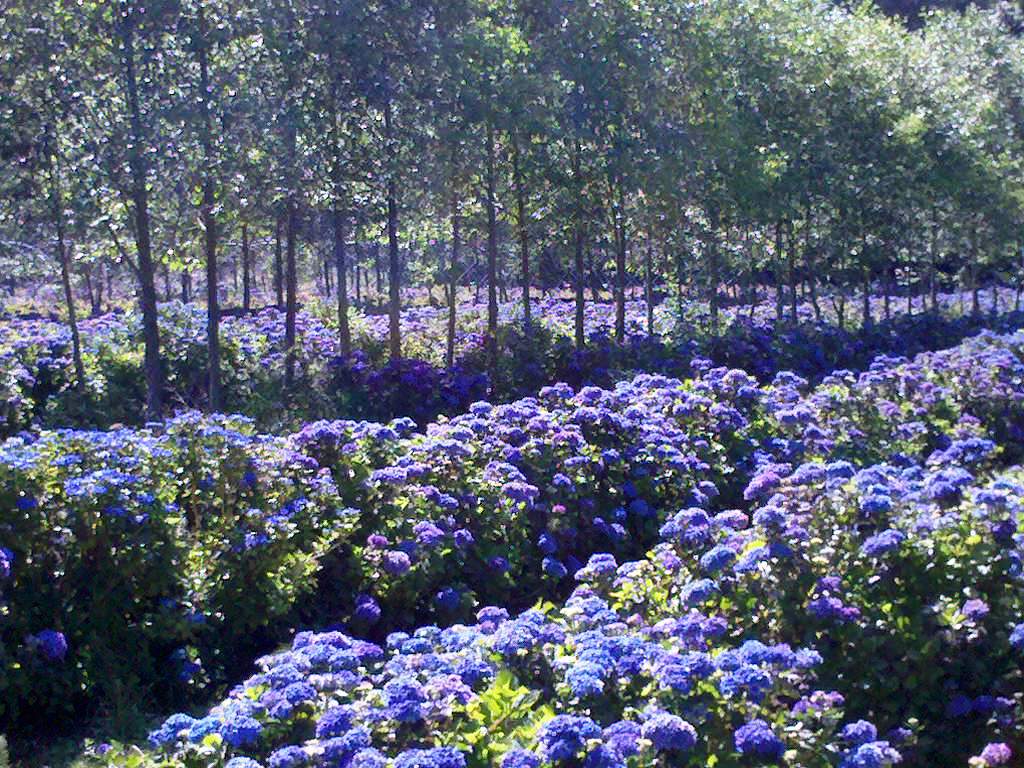
Feast your eyes on the Hydrangea Fields at Oregon Coastal Flowers. Field-grown, true-blue hydrangeas! You can’t get it any better!
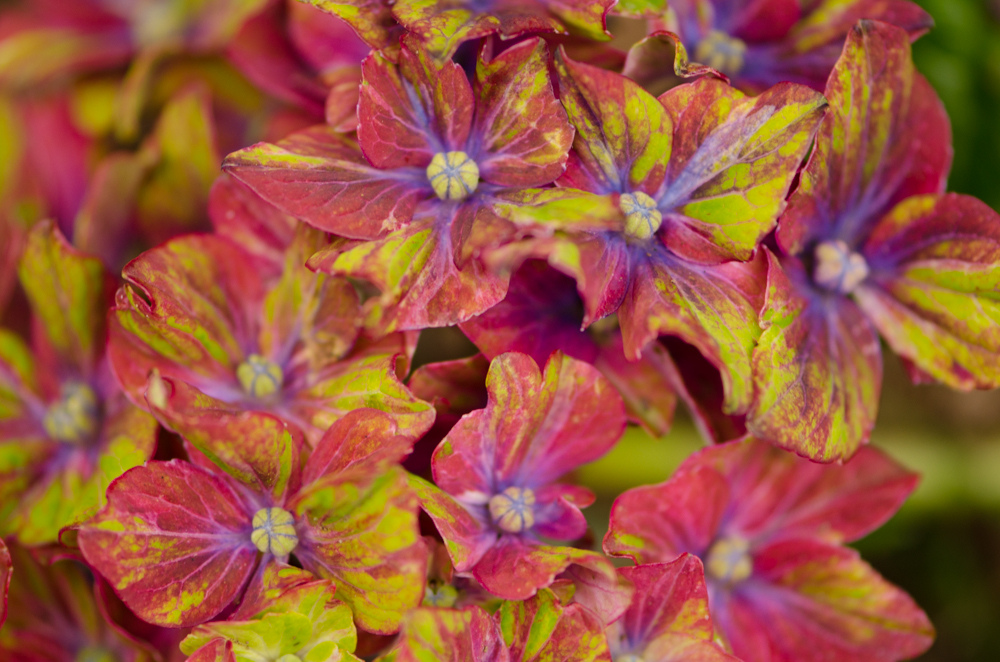
Here’s that awesome new Hydrangea macrophylla ‘Pistachio’ that Patrick talked about in our interview.
I met Patrick in 2010 at the regional
Association of Specialty Cut Flower Growers conference in Eugene, Oregon. That was the very first occasion when he and other farmers dreamed of launching a cooperative
Farmer-to-Florist venture in Seattle. One year later, that little market began: the
Seattle Wholesale Growers Market. Full disclosure: I now serve with Patrick as an industry liason on the Co-op board. That experience has allowed me to get to know this creative farmer better – and watch him at work. It’s impressive!
Patrick is competitive by nature, bringing the intense energy that he once devoted to a college track and field career to his professional life. In the early days of the SWGMC, he told me, “I knew there would be demand if we committed to the [warehouse] lease and took the risk. When you sell face-to-face, when you have a quality product, you have something that’s so much better than what you see on paper or online.” By opening their own market and direct-selling to florists, “we’re cutting out the middleman,” he explains.

Here’s an arial view of Oregon Coastal Flowers where you can spot the full-size competitive race track amidst the fields.
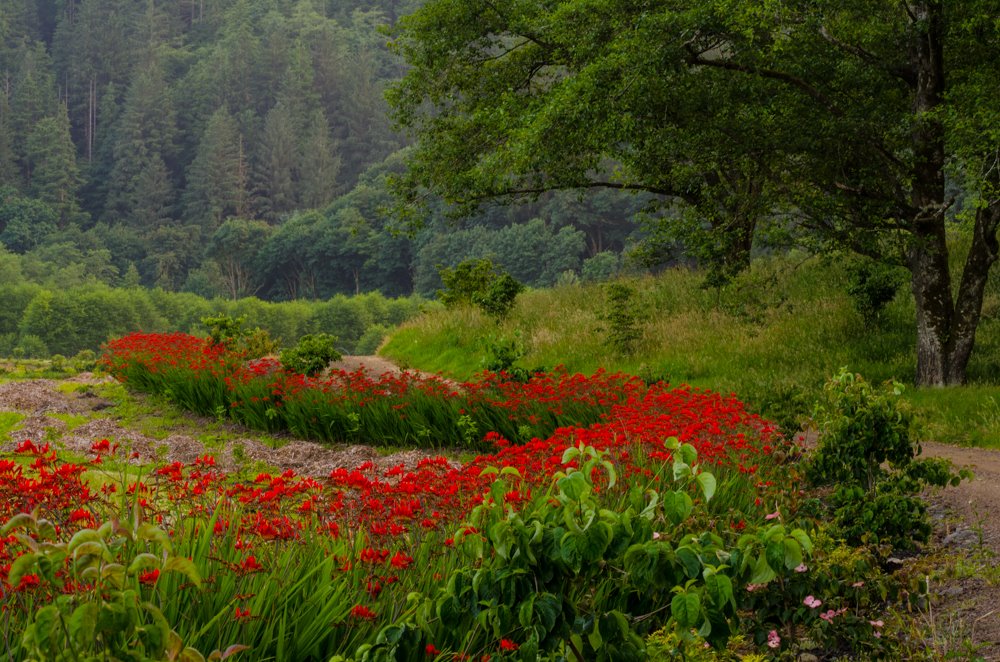
Check out the Crocosmia borders!
His story is revealing because he so generously explains how he has weathered the highs and lows of his business. If you have any romantic notion that being a flower farmer is a dreamy way to commune with nature, I know Patrick’s story will be both inspiring and sobering. It is not an idyllic existence. It is incredibly hard, endless work. It is a choice, but it is not an easy choice.
Patrick’s message is that if you can find your niche and be the very best in that niche, you *might* succeed. Being the best means producing excellent, high-quality botanical and floral elements. It also means the type of customer service you provide and the relationships you build with customers.
But no matter how beautiful or fresh the bloom, domestic farmers face competition on price, especially from importers who buy from low-wage countries, Patrick says. “I was the first person in the U.S. to sell colored calla lilies in a big way. I couldn’t have bought my farm without them. Then the South Americans started selling callas for 30-cents-per-stem against my $1-per-stem product. And they had added incentives, like buy one box, get a second one for free. I just can’t compete with South America on callas, even if my quality is great.” Patrick describes how cheap imports nearly ruined his core business – colored calla lilies. By 2008, he was faced with devastating losses of 85% of his total revenue and Patrick was driven to save his company.
He didn’t give up. He didn’t see that he had a choice. With a mortgage on his farm and family and employees to support, Patrick searched for a way to diversify Oregon Coastal Flowers.
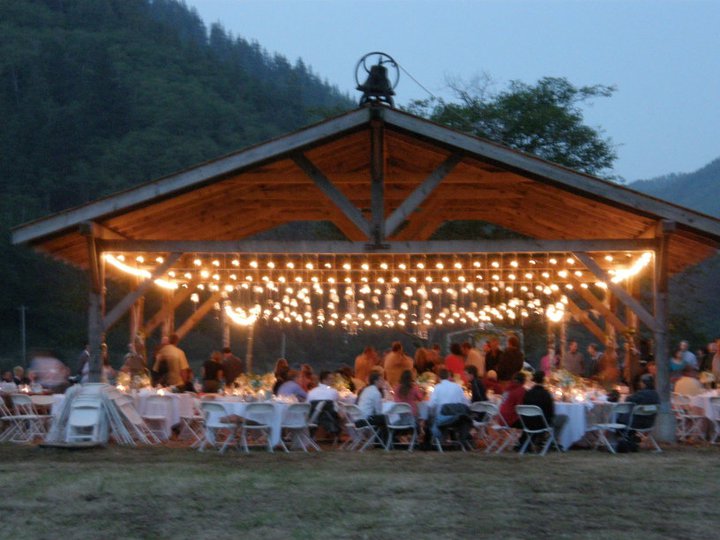
The wedding pavilion at Hydrangea Ranch, a gorgeous event space at Oregon Coastal Flowers.
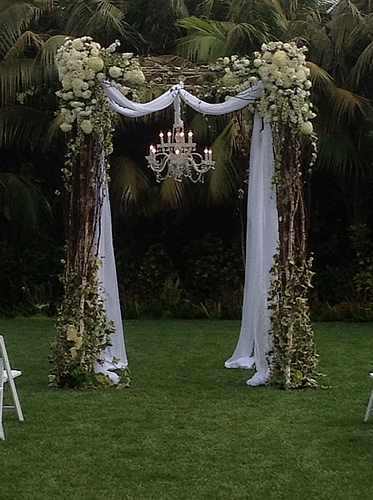
The romantic Alder arbors created at Oregon Coastal Farms from alder poles harvested on local forest land.
Hear the optimistic story of how he’s survived and moved beyond that episode to become even more solid in knowing his niche. This is a story of never giving up – and being smart and resourceful enough to find a solution that satisfies your customers, to provide products that meet a need in the floral marketplace, and to find new marketplaces for those products.
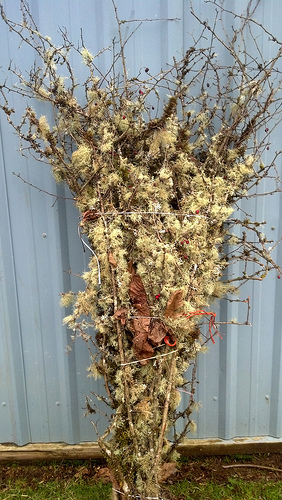
Mossy branches – a signature product offering.
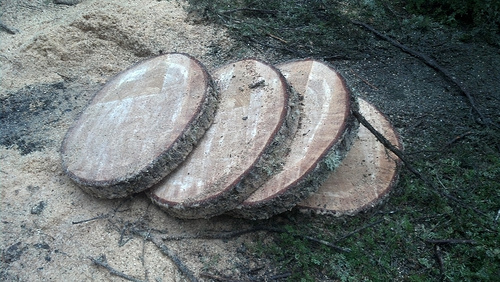
Here are those little log “cake plates” that Patrick has popularized among the floral, wedding & event world.
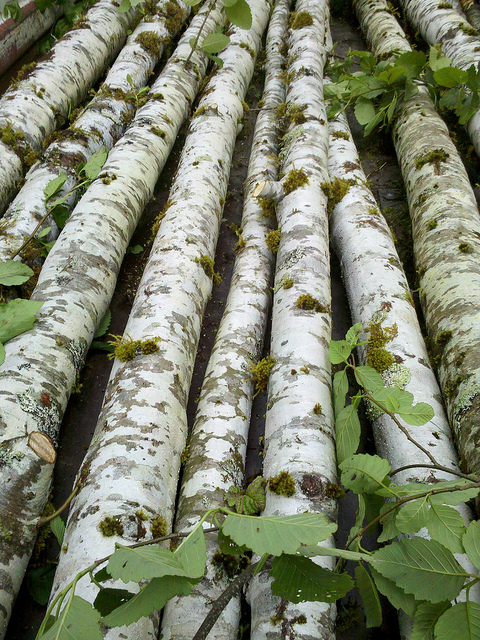
Oh, wow, those Alder logs!

All kinds of goodies from the Oregon forest: mosses, ferns, gnarly surprises!
Patrick credits his ability to quickly change direction for saving his business. He noticed a few years ago that floral designers were snatching up his offerings of Northwest forest products, such as lichen-clad branches, soft green mosses, cone-laden conifer boughs and other woodland items, infusing their bouquets with a naturalistic feel. In the past three years, Oregon Coastal Flowers has increased the variety of specialty forest items, while at the same time shrinking its acreage devoted to calla lily production. With forest service permits that allow him to legally harvest everything from birch saplings to decaying tree trunks, Patrick has seen his sales double from 2010 to 2011.
There will always be people who choose “cheap” first. Yet conscious consumers are voting with their values and their dollars – and focusing on other important product attributes like Seasonal, Local, Sustainable, and, in Patrick’s case, unusual and hard-to-grow or ship from South America. As the American Grown message increases, and as more consumers see value in the origins of the flowers they choose in the marketplace, that playing field will leveled out.









